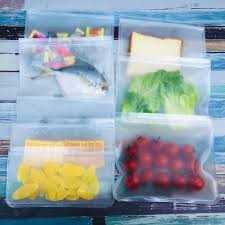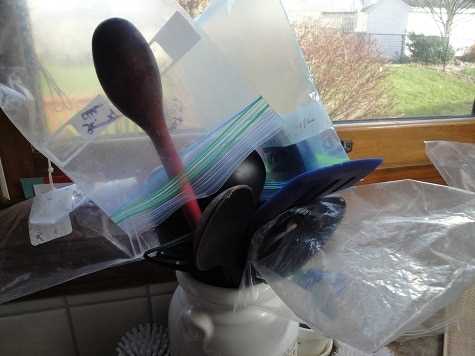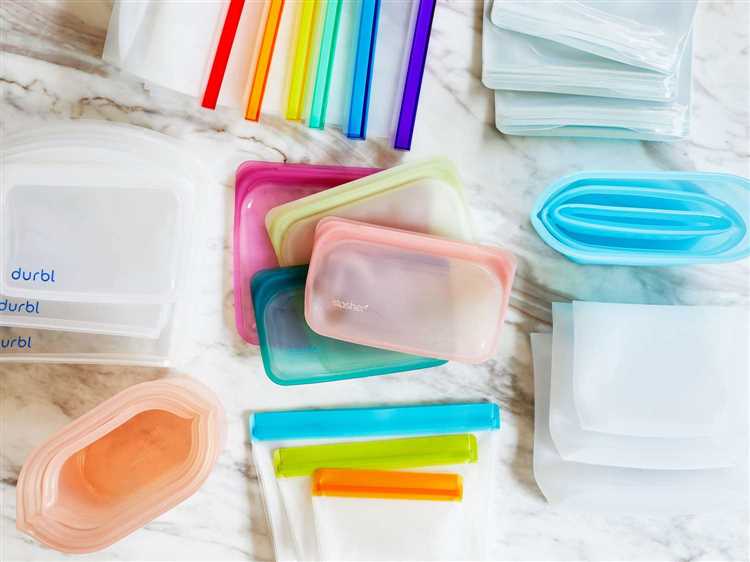Ziploc bags have become a staple in many households, offering a convenient and efficient way to store and organize various items. But one question that often arises is whether these bags can be reused. Is it safe to wash and reuse Ziploc bags, or should you simply dispose of them after each use? In this article, we will explore the answer to this common question and provide you with all the information you need.
Firstly, it is important to understand that Ziploc bags are made from a durable and high-quality material that is designed to withstand multiple uses. These bags are typically made from polyethylene, a plastic that is known for its strength and ability to resist tearing. However, it is crucial to note that not all Ziploc bags are created equal, as some are specifically designed for single-use only.
So, can you reuse Ziploc bags? The answer is yes, you can reuse many types of Ziploc bags. In fact, Ziploc even states on their website that their bags can be reused and are dishwasher safe. However, there are a few important factors to consider when deciding whether to reuse a Ziploc bag.
Firstly, the contents of the bag play a significant role. If you have used the bag to store something messy or potentially harmful, such as raw meat or cleaning chemicals, it is best to discard the bag after use. The risk of contamination or cross-contamination is too great, and it is not worth the potential health hazards. However, if the bag has been used to store non-hazardous items such as snacks, sandwiches, or dry goods, it is generally safe to wash and reuse the bag.
- Are Ziploc Bags Reusable?
- Exploring the Reusability of Ziploc Bags
- Benefits of Reusing Ziploc Bags
- 1. Cost Savings
- 2. Environmental Impact
- 3. Versatility
- How to Properly Clean and Care for Ziploc Bags
- Factors to Consider When Reusing Ziploc Bags
- 1. Condition of the Bag
- 2. Type of Contents
- 3. Proper Cleaning
- Question-answer:
- Why should I reuse Ziploc bags?
- How do I properly clean and dry a used Ziploc bag?
- Can I reuse Ziploc bags for storing food?
- How many times can a Ziploc bag be reused before it needs to be thrown away?
Are Ziploc Bags Reusable?
Many people wonder whether or not Ziploc bags can be reused. The answer to this question largely depends on the condition of the bag and what it was used for.
Ziploc bags are designed to be durable and reusable, but this does not mean that they can be reused indefinitely. Over time, the bags can develop small holes or tears, making them less effective at sealing in freshness or preventing leaks.
Additionally, Ziploc bags that have been used to store meat, fish, or other perishable items may have come into contact with bacteria or other microorganisms. In these cases, it is generally not recommended to reuse the bags, as they may not be effectively cleaned and could lead to cross-contamination.
However, if a Ziploc bag has only been used to store non-perishable items such as dry snacks or office supplies, it can often be rinsed out and reused several times before it needs to be discarded.
It is important to note that reusing Ziploc bags can help reduce waste and save money, but it is not a substitute for proper food safety practices. It is always best to use fresh bags when storing perishable items and to follow the appropriate food storage guidelines recommended by health authorities.
| Can Ziploc Bags Be Reused? | Recommendation |
|---|---|
| Bag in good condition and used with non-perishable items | Can be rinsed out and reused several times |
| Bag in good condition and used with perishable items | Not recommended for reuse due to potential contamination |
| Bag with holes or tears | Not recommended for reuse |
In conclusion, while Ziploc bags can be reused, it is important to consider their condition and what they were used for. Proper food safety practices should always be followed to ensure the safety and freshness of your stored items.
Exploring the Reusability of Ziploc Bags
Ziploc bags are widely used in households and are known for their convenience in storing and keeping food fresh. Many people wonder if these bags can be reused to reduce waste and save money. Let’s explore the reusability of Ziploc bags and find out if it’s a practical option.
While Ziploc bags are designed for single-use purposes, they can often be reused with proper care and attention. The reusability of a Ziploc bag depends on several factors, including the type of food stored, the condition of the bag, and how it was used.
When reusing a Ziploc bag, it’s important to ensure that it’s thoroughly cleaned and dried before each use. Washing the bag with warm soapy water and rinsing it well can help remove any food residue and odors. It’s also recommended to air dry the bag or use a clean towel to dry it completely.
Ziploc bags that were used to store dry foods like crackers or chips are generally easier to clean and reuse, as they leave behind fewer residues. On the other hand, bags that contained greasy or sticky foods may be more difficult to clean and may retain odors, making them less suitable for reuse.
It’s also worth considering the condition of the Ziploc bag itself. If the bag is torn, has holes, or shows signs of wear and tear, it’s best not to reuse it, as it may not provide a reliable seal and could compromise the freshness and safety of the stored food.
Reusing Ziploc bags can be a money-saving and environmentally friendly practice, but it’s important to use them judiciously. It’s recommended to reuse a bag a few times before discarding it, ensuring it’s still in good condition and thoroughly cleaned after each use. Over time, the bag may lose its durability and effectiveness, so it’s important to regularly inspect and replace them as needed.
In conclusion, while Ziploc bags are primarily designed for single-use purposes, they can often be reused with proper care and attention. By keeping them clean, inspecting their condition, and using them judiciously, you can extend their lifespan and reduce waste.
Benefits of Reusing Ziploc Bags

Reusing Ziploc bags can offer several benefits. Here are some of the advantages of reusing Ziploc bags:
1. Cost Savings

- By reusing Ziploc bags, you can save money by not having to buy new bags as frequently.
- Ziploc bags are durable and can withstand multiple uses, making them an economical choice compared to single-use plastic bags that need to be purchased more frequently.
2. Environmental Impact
- Reusing Ziploc bags helps reduce waste and minimizes the amount of plastic that ends up in landfills or pollutes the environment.
- Every time you reuse a Ziploc bag, you contribute to the reduction of plastic waste, helping to protect the planet for future generations.
- Using fewer plastic bags overall also helps conserve natural resources and energy that would otherwise be required for their production.
3. Versatility
- Ziploc bags are versatile and can be used for storing a wide variety of items, such as food, snacks, toiletries, travel essentials, and more.
- By reusing Ziploc bags, you can keep your belongings organized and protected without the need to invest in additional storage containers.
Overall, reusing Ziploc bags is an environmentally-friendly and cost-effective option that offers various benefits. By giving them a second or even third life, you can save money, reduce waste, and contribute to a healthier planet.
How to Properly Clean and Care for Ziploc Bags

Ziploc bags are a convenient and versatile tool for storing and transporting food, but they can also be an eco-friendly choice if properly cared for and reused. Here are some tips on how to clean and care for your Ziploc bags to extend their lifespan:
1. Rinse with mild soap and cold water: After using your Ziploc bag, empty any leftover food and rinse it with mild soap and cold water. Gently scrub the inside and outside of the bag to remove any residue. Avoid using hot water, as it can cause the bag to warp or melt.
2. Turn the bag inside out: Once you have rinsed the bag, turn it inside out to ensure thorough cleaning. This will allow you to reach all the corners and crevices where food particles may be trapped. Use your fingers or a soft brush to remove any remaining debris.
3. Let it air dry: After washing, shake off any excess water and let the bag air dry. You can hang it up or place it over a dish drainer to ensure proper ventilation. Avoid using a towel to dry the bag, as it can leave lint and particles behind.
4. Store properly: Once the bag is completely dry, store it in a cool and dry place. Avoid exposing it to direct sunlight or extreme temperatures, as they can weaken the bag and reduce its lifespan.
5. Inspect for damages: Before reusing a Ziploc bag, make sure to inspect it for any damages. Check for holes, tears, or weakened seals that could compromise its functionality. If you notice any damages, it is best to discard the bag and use a new one.
6. Reuse with caution: While Ziploc bags can be reused multiple times, it is important to use them with caution. Some foods may leave strong smells or stains that can be difficult to remove, so it is best to avoid reusing bags that have held strong-flavored or heavily colored foods.
7. Dispose responsibly: If a Ziploc bag becomes damaged or reaches the end of its useful life, it is important to dispose of it responsibly. Look for recycling programs in your area that accept plastic bags, and make sure to clean and dry the bag before recycling.
By following these simple steps, you can not only extend the lifespan of your Ziploc bags but also reduce your plastic waste and contribute to a more sustainable lifestyle. Remember to clean and care for your Ziploc bags with these tips to make the most out of this versatile storage solution.
Factors to Consider When Reusing Ziploc Bags
Ziploc bags can be a practical and convenient way to store and organize various items, but can they be reused? The answer is not a simple yes or no, as there are several factors to consider when deciding whether to reuse Ziploc bags.
1. Condition of the Bag
Before reusing a Ziploc bag, it’s essential to carefully inspect its condition. Check for any holes, tears, or damage to the zipper closure. Damaged bags may not provide a proper seal, which can lead to leakage or contamination of the stored items. If the bag is in good condition, you can consider reusing it.
2. Type of Contents
The type of contents that were previously stored in the bag should also be taken into account. Some items, such as dry snacks or non-perishable goods, may not leave strong odors or residues. These types of contents are generally more suitable for reusing the bag. However, bags that previously held strong-smelling foods, like onions or garlic, may retain odors even after washing, making them less ideal for reuse.
It’s important to ensure that the contents of the bag are clean, dry, and free from any potentially harmful substances before reusing the bag.
3. Proper Cleaning
Properly cleaning the Ziploc bag is crucial to ensure its safe reuse. Wash the bag thoroughly with warm, soapy water, inside and out. Pay attention to the zipper and any crevices where food particles may get trapped. Rinse the bag well and air dry it completely before reusing.
Remember, certain bags may not be safe to reuse, such as those that have been used to store raw meats or seafood, as they can pose a risk of bacterial contamination.
By considering these factors, you can make an informed decision about whether to reuse your Ziploc bags. Reusing bags not only helps reduce waste and save money but also promotes environmental sustainability.
Question-answer:
Why should I reuse Ziploc bags?
Reusing Ziploc bags can help reduce plastic waste and save money in the long run. By washing and drying the bags properly, they can be used multiple times before needing to be thrown away.
How do I properly clean and dry a used Ziploc bag?
To clean a used Ziploc bag, turn it inside out and wash it with warm, soapy water. Rinse the bag thoroughly and let it air dry completely before reusing it.
Can I reuse Ziploc bags for storing food?
Yes, you can reuse Ziploc bags for storing food. Just make sure to clean them thoroughly after each use to prevent any contamination. It’s also a good idea to label the bags with the contents and date to keep track of what’s inside.
How many times can a Ziploc bag be reused before it needs to be thrown away?
The number of times a Ziploc bag can be reused depends on various factors, such as the type of food stored, how it was cleaned, and any signs of wear and tear. On average, Ziploc bags can be reused 2-3 times before needing to be replaced.